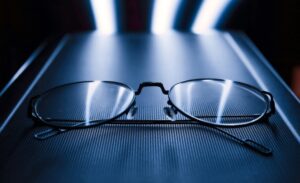Let’s delve into the intricacies of safety glasses and their significant differences from regular glasses. Understanding these disparities will shed light on the importance of choosing the right eyewear for different settings and activities. While they may seem similar at first glance, safety glasses are equipped to provide protection from a myriad of potential hazards, including impacts, chemicals, and UV radiation, making them an essential accessory for those working in high-risk environments. This informative blog post will explore the key features that set safety glasses apart from regular glasses, as well as offering insight into the risks of wearing the wrong type of eyewear in hazardous situations.
Key Takeaways:
- Impact Resistance: Safety glasses are designed to withstand high-impact situations, while regular glasses are not. Safety glasses are made from durable materials such as polycarbonate to protect the eyes from flying debris and other hazards.
- Wraparound Design: Safety glasses often feature a wraparound design to provide full coverage and protection for the eyes, while regular glasses have a more traditional frame that leaves gaps for debris to enter.
- UV Protection: Many safety glasses come with built-in UV protection to shield the eyes from harmful UV rays, whereas regular glasses may not offer the same level of protection.
Materials and Design
Even though safety glasses may resemble regular eyeglasses, there are significant differences in the materials used and design of the frames.
Materials Used in Safety Glasses
An important distinction between safety glasses and regular glasses is the materials used in their construction. Safety glasses are made from impact-resistant materials such as polycarbonate or Trivex, which are much stronger than the plastic or glass used in regular eyeglasses. These materials are designed to withstand high-velocity impacts, making them ideal for protecting the eyes in hazardous work environments. Additionally, safety glasses often feature anti-scratch and anti-fog coatings to enhance their durability and visibility.
Comparing Frame Designs
Designs
| Safety Glasses | Regular Glasses |
| Wider side shields for added protection | Narrower, more lightweight frame |
| Wrap-around design for increased coverage | Standard frame with limited coverage |
With safety glasses, the emphasis is on providing optimal protection for the eyes, which is reflected in the wider side shields and wrap-around design. In contrast, regular glasses prioritize aesthetic and comfort, resulting in a narrower and more lightweight frame. Understanding these differences is crucial in selecting the right eyewear for specific tasks and environments.
Lens Specifications
Assuming you’re shopping for safety glasses, it’s important to understand the specifications of the lenses. While regular glasses are designed to correct vision, safety glasses are engineered to protect your eyes from potential hazards in the workplace or during recreational activities. The lens specifications play a critical role in the level of protection they provide.
Safety Lens Standards
Lens standards for safety glasses are regulated by organizations such as the American National Standards Institute (ANSI) and the Occupational Safety and Health Administration (OSHA). These standards ensure that safety lenses are impact-resistant and provide protection against various environmental factors such as dust, liquid chemicals, and flying debris. It’s important to look for safety glasses that meet these standards to ensure maximum eye protection in hazardous environments.
Prescription Lenses vs. Safety Lenses
Prescription lenses are designed to correct vision impairments, while safety lenses are developed to safeguard the eyes from potential injuries. Prescription lenses are tailored to an individual’s specific vision needs, while safety lenses prioritize impact resistance and protection against potential hazards in the environment. It’s crucial to understand the distinctions between the two to make an informed decision when choosing the right eyewear for your needs.
To ensure proper eye protection, individuals with vision impairments can opt for prescription safety glasses that combine the benefits of both prescription lenses and safety lenses. These specialized eyewear options offer vision correction while also providing the necessary protection against workplace hazards or sports-related injuries.
Impact Resistance
Keep your eyes protected with safety glasses that are designed to provide impact resistance against a variety of hazards. Unlike regular glasses, safety glasses are built to withstand the force of flying debris, high-velocity particles, and other potential dangers in the workplace or outdoor environments.
Testing for Impact Resistance
Testing the impact resistance of safety glasses is crucial in ensuring their ability to protect the eyes. Safety glasses undergo rigorous testing to meet specific standards set by regulatory bodies. This includes testing the frame and lens materials for their ability to withstand high-velocity impact, as well as evaluating their overall durability and performance in simulated real-world conditions.
With safety standards in place, safety glasses are proven to provide superior protection against impact-related eye injuries in various industries, including construction, manufacturing, woodworking, and outdoor sports. Whether it’s a small workshop or a hazardous construction site, safety glasses play a critical role in keeping workers and outdoor enthusiasts safe and productive.
Importance in Various Industries
Importance of impact resistance in safety glasses cannot be understated, especially in industries where eye injuries are a common risk. Safety glasses are designed to provide protection against various hazards, including flying particles, chemical splashes, and UV radiation. Their impact resistance and protective features make them an essential personal protective equipment for workers and individuals exposed to potential eye hazards.
Features and Accessories
Unlike regular glasses, safety glasses are designed with specific features and accessories to provide additional protection in hazardous environments. These features are crucial for ensuring the safety and well-being of the wearer in various industrial and construction settings.
Side Protection and Coatings
The side protection and specialized coatings distinguish safety glasses from regular eyewear. Safety glasses are designed with side shields, wraparound frames, or extended lenses to provide additional coverage and prevent debris and particles from entering the eyes from the sides. Furthermore, these glasses are equipped with anti-fog and anti-scratch coatings to ensure clear visibility and durability in demanding work conditions.
Additional Safety Features
Accessories such as adjustable straps, detachable foam inserts, and interchangeable lenses are commonly found in safety glasses to enhance their comfort and versatility. Some models also incorporate UV protection and polarized lenses to prevent the harmful effects of sunlight, making them suitable for outdoor work environments.
For instance, safety glasses with photochromic lenses automatically adjust their tint in response to changing light conditions, providing optimal vision in varying environments. These features make safety glasses indispensable for individuals working in industries where eye protection is paramount.
Conclusion
With this in mind, it is evident that safety glasses differ from regular eyeglasses in several important ways. Safety glasses are designed to provide impact protection and are made from durable materials to withstand workplace hazards. They also often feature side shields to offer additional coverage and protection for the eyes. On the other hand, regular glasses are primarily meant for vision correction and do not offer the same level of protection against potential eye injuries. It is crucial for individuals working in hazardous environments to prioritize their eye safety by choosing the appropriate eyewear. By understanding the differences between safety glasses and regular glasses, individuals can make informed decisions to ensure their eye health and safety in the workplace.
FAQ
Q: What is the difference between safety glasses and regular glasses?
A: Safety glasses are specifically designed to protect the eyes from hazards such as flying debris, chemical splashes, and impact injuries. They are made from impact-resistant materials and have side shields to provide additional protection. Regular glasses, on the other hand, are not designed to withstand such hazards and do not provide the same level of protection.
Q: Can safety glasses be used as regular eyeglasses?
A: While safety glasses provide protection for the eyes, they are not typically designed for vision correction. Safety glasses may not have the same prescription lenses as regular eyeglasses. It is important to use safety glasses for their intended purpose and not as a substitute for regular eyeglasses.
Q: Are safety glasses more expensive than regular glasses?
A: The cost of safety glasses can vary depending on the features and level of protection they provide. While some safety glasses may be more expensive than regular glasses due to their specialized design and materials, there are also affordable options available. The investment in safety glasses is crucial for protecting the eyes from workplace hazards and should be considered a necessary expense for personal safety.






